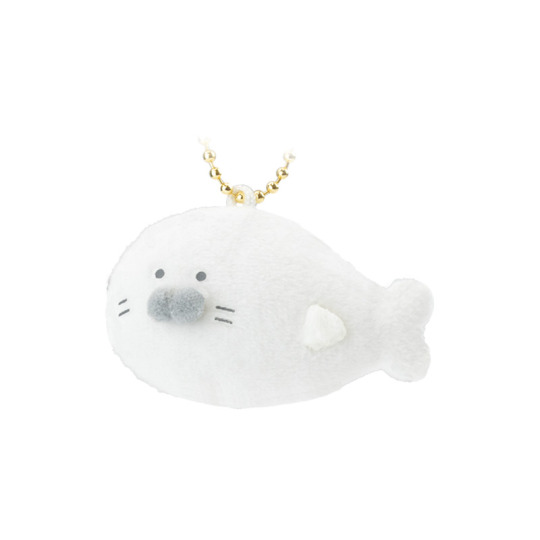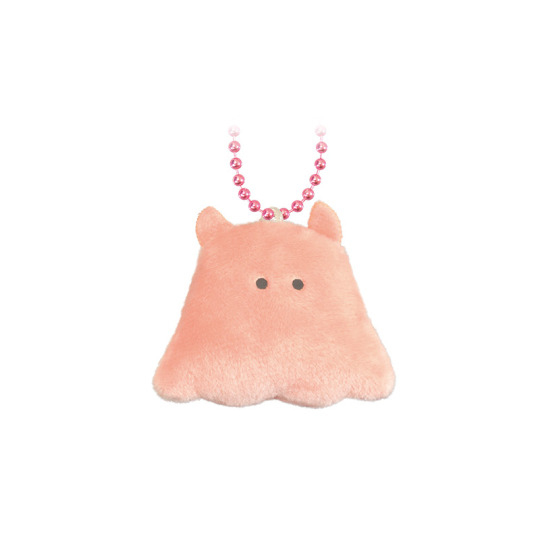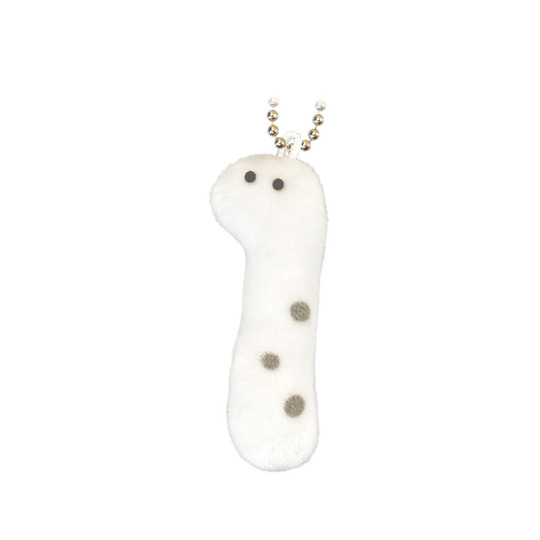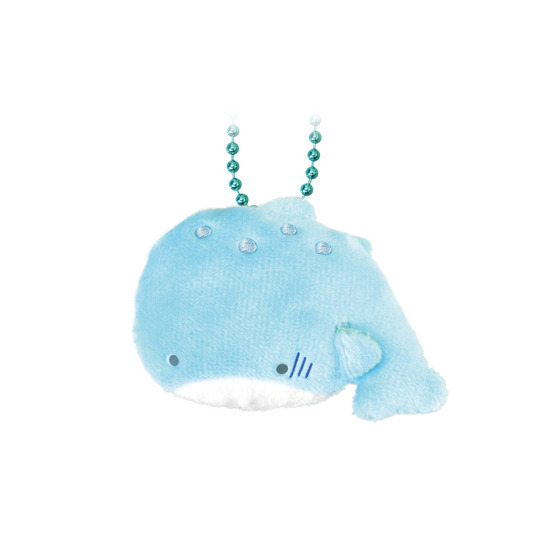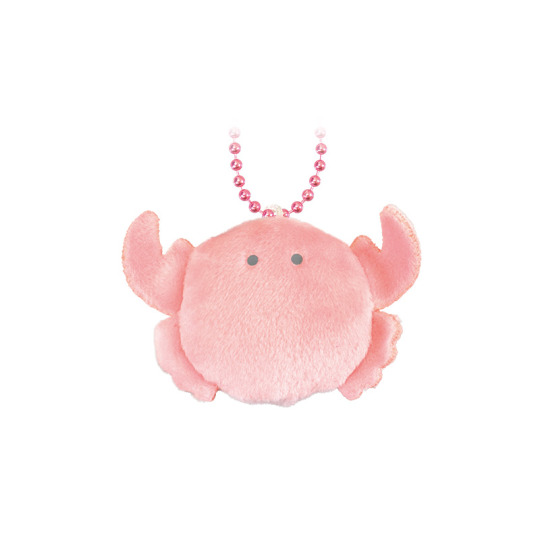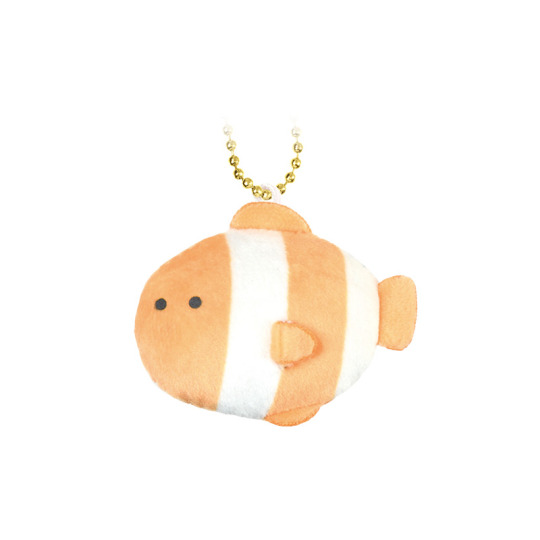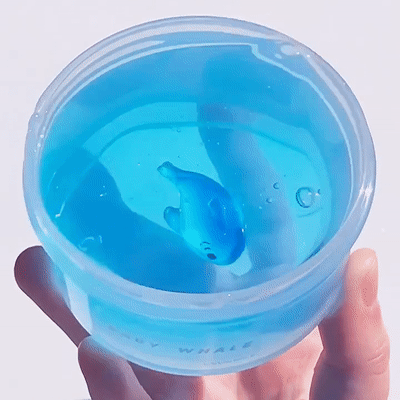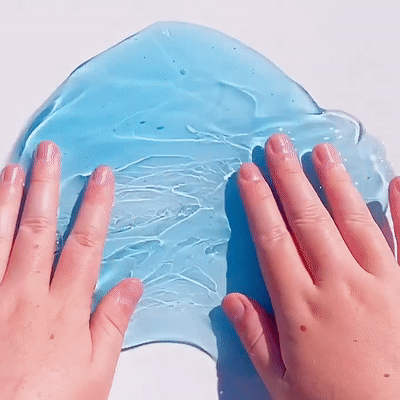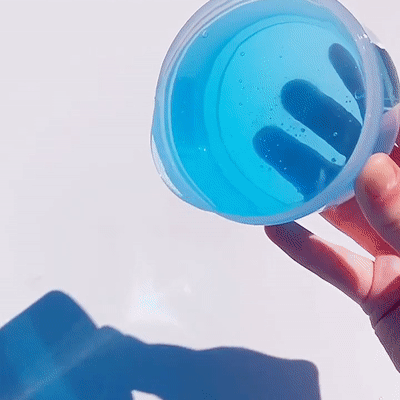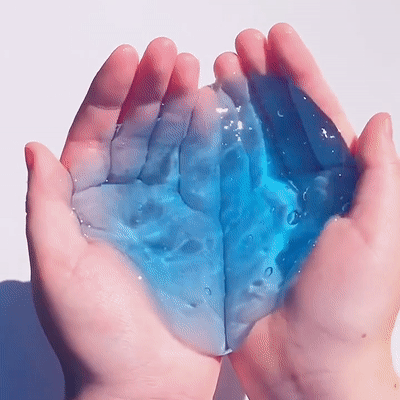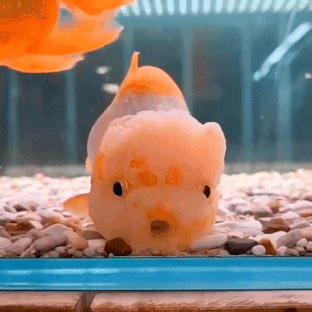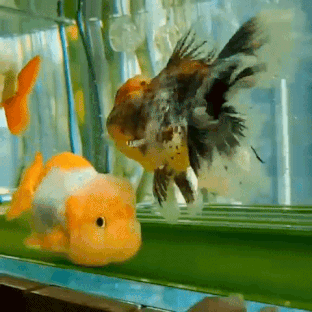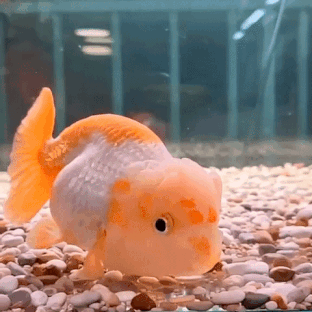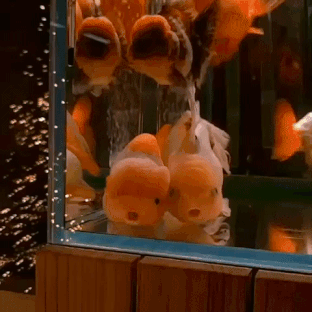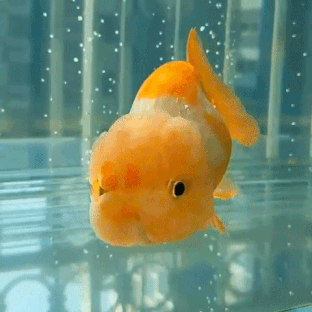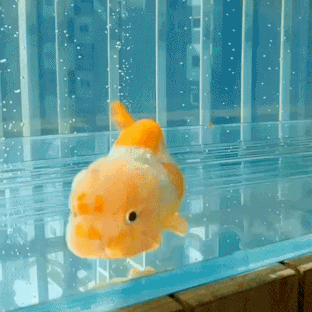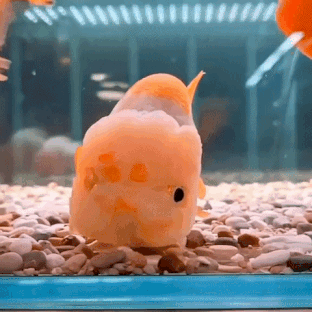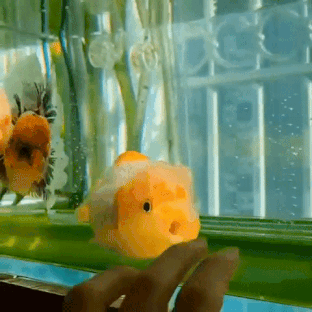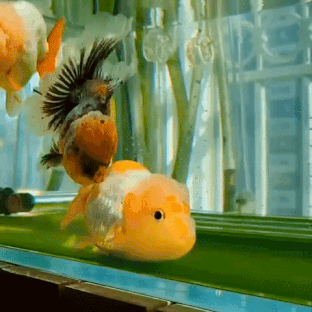Text





"Nautiluses are a living link to the ancient past.
They’ve been around over 480 million years, cruising deep ocean reefs even before the time of dinosaurs. These soft-bodied creatures live inside an intricately chambered shell.
A nautilus can only sense dark and light with its simple, pinhole-type eyes. But a nautilus can perceive water depth and current directions, as well as current speeds, to help it keep its body upright. A highly developed sense of smell helps a nautilus search for food and find mates."
Full article
- Monterey Bay Aquarium
2K notes
·
View notes
Note
what be your favorite cephalopod
I have lists of my favorites but if I had to choose one out of them it would be The Gloomy Octopus!





Octopus Tetricus, nicknamed The Gloomy Octopus for it's big droopy eyes!
It was originally thought to be a solitary species but they can actually be quite social and have been observed making dens within close proximity of each other!
In fact there are two octopus "cities" that have been discovered called Octopolis and Octlantis, the 2 sites are within a few hundred meters of each other and up to 14 octopuses have been observed living in one of these cities at once.
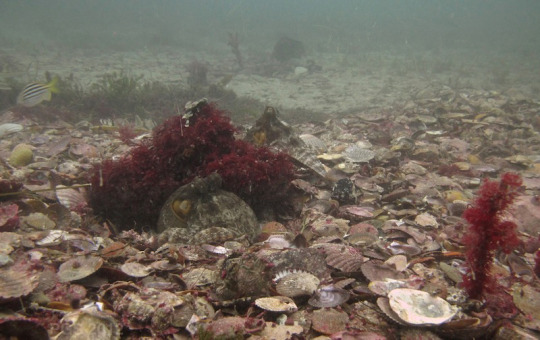
(Above is a picture of two gloomy octopuses from the Octopolis site)
Octopolis is made up of several dens and some human debris, namely a large cement block structure that has been seen with 3 octopuses nestled in the nooks at once. This led scientists to believe these octopus cities could only form with the condition of human structures, until they discovered Octlantis only a few hundred meters away from the original site, which was only made up from octopus-made dens.
The thing about gloomy octopuses is that they're ecosystem engineers, and what I mean by that is the way they interact with the environment around their den creates an active ecosystem.
(Video of an Octopolis resident cleaning it's den of shells)
When they make a den they often leave piles of discarded shells around, these shell piles create great hiding places for smaller prey that they can easily catch. These small fish attract larger fish, and the cycle builds. And it is absolutely incredible.
There's a lot to love about these guys and you will surely see me posting more of them on here!
554 notes
·
View notes
Text
A while back I made a series of posts examining the real-world origins of every fish Pokémon. It’s been a while but I’ve gotten the urge to do more of that. So now I’m doing the same thing, but with every aquatic non-fish Pokémon instead. What I define as aquatic is that it has been depicted as aquatic either in Pokédex entries or in the main series games. Most of them are water-types but not all and there are even a few water types I don’t think are aquatic. I’m also going to cover the water starters and legendaries/mythicals in their own segments. I will start with generation I, which I will be splitting in half because of how many there are. This entry will cover the Psyduck through Shellder lines while part 2 will cover the Krabby through Dratini lines.
The Psyduck line seems pretty obvious. It’s right in the name, they’re ducks, right? Well I’m not entirely convinced that’s all. Psyduck has the classic yellow duckling/rubber duck coloration, but it clearly has arms instead of wings. There’s another hint of them not being ducks in their typing. Back in the development of gen I, the flying type was called the bird type. This is why the Doduo line is part flying despite being flightless. The similarly flightless psyduck line not being granted the bird type makes me think they aren’t supposed to be ducks, but rather playtpuses (platypi?). These are among the only surviving monotremes, a lineage of primitive, egg-laying mammals that may represent a stage of development between pre-mammal therapsids and modern viviparous mammals. The platypus has four legs with webbed toes and a duck-like bill, just like the Psyduck line. The only thing the two are missing is the beaver-like tail.
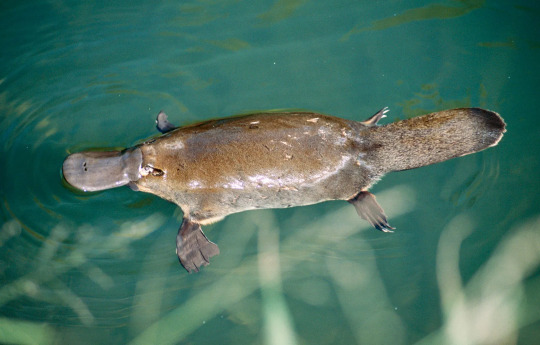
(image: a chimera platypus)
Golduck is also based on the kappa, a creature of Japanese folklore described as a humanoid with a beak that lurks in ponds and streams. The gem on Golduck’s forehead is likely based on the third eye symbolism you get in a lot of new-age woo and the pseudoscience of parapsychology, which was adapted from the chakras of Hinduism. This is in reference to the line having psychic powers despite not being psychic-type.
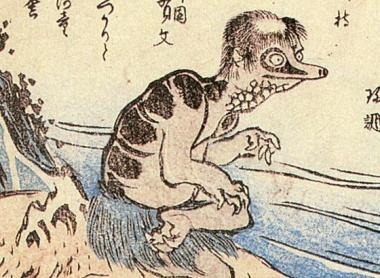
(image: one of many depictions of a kappa)
The Poliwag line are based on tadpoles, the larval stage of frogs. As they mature, tadpoles go from basically a head with a tail on it to a tailless frog. Poliwag represents an early stage in the metamorphosis of a tadpole where it starts to grow hind legs and has not yet lost its tail or started to grow its front legs.

(image: a tadpole with its hind legs grown in)
Poliwhirl and Poliwrath are a more advanced state of metamorphosis where the tadpole has grown all its legs and lost its tail, but is still not a mature frog. Only if Poliwhirl evolves to Politoed does it become a mature frog. Poliwrath never fully maturing is an example of neoteny, a species retaining juvenile traits into adulthood. There aren’t any examples of neotenic frogs that I could find, but there are neotenic salamanders, most famously the axolotl, with keeps multiple juvenile traits as an adult. Politoed is just a generic green frog. The spirals on the bellies of the line is a reference to how some species of frog have such thin abdominal skin in their tadpole stage that their intestines can be seen through the skin. (warning, potentially gross picture below).

(image: a tadpole with visible intestines)
The tentacool line are jellyfish. Specifically, Tentacool may be a box jellyfish, the only jellyfish with true eyes.
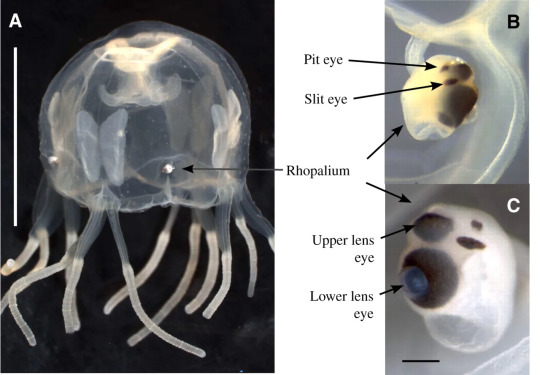
(image: diagram of a box jellyfish with focus in the eyes. source)
Several species of box jellyfish are also extremely dangerous to humans, with their venom causing extreme pain and death. Tentacruel may also be based on the Portugese man-o-war (in fact, Manowar was its prototype English name). Despite looking similar and having a similar hunting style, man-o-wars are not jellyfish, but siphonophores, an extremely cool group of colonial cnidarians you can learn about here. Man-o-wars float on the surface of the water and with for prey to run into their stinging tentacles. Tentacruel is often depicted hunting in a similar style.
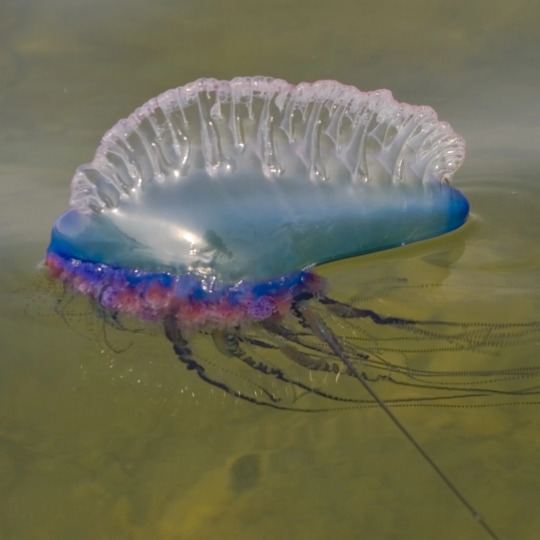
(image: a man-o-war)
Finally, the line’s big red gems and ability to fire laser beams from them likely comes from “bug-eyed monsters” a classic type of sci-fi monster typically found in b-movies.
The Slowpoke line are weird. They are one of those Gen I lines that are weird monsters with little in the way of real-life counterparts like the Nidos, Rhyhorn, and Kangaskhan. I think Slowpoke is a combination of hippos and giant salamanders. It has the little round ears and snout of hippos (which spend much of their time in the water) while its body shape and behavior are closer to giant salamanders. Not just any big salamanders though, they are based on the Cryptobranchids, of which there are three living species: the Chinese giant salamander (actually 5 closely-related species), Japanese giant salamander, and north American hellbender. These giant salamanders spend most if not all their time underwater and are known to be very long-lived and spend most of their time sitting perfectly still, waiting for prey to pass by. Their very still and slow lifestyles inspired Slowpoke’s slowness and stupidity.
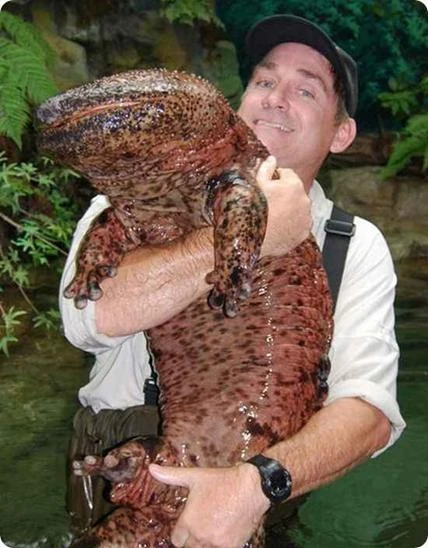
(image: a man holding a giant salamander and fulfilling a wish I didn't know I had until just now)
Things get more complicated when Slowpoke evolves. Both Slowbro and Slowking have a symbiotic relationship with a shellder that bites onto their tail or head, respectively. The shape of the Shellder is based on a turban snail and was planned to be available as an evolution foe Shellder in the Gold/Silver beta called Turban. The fact that the line’s Japanese names (Yadon, Yadoran, and Yadoking) come from the word “yadokari” meaning “hermit crab” and Slowbro being called the hermit crab Pokémon is pretty clear that they supposed to be hermit crabs despite being possibly the least hermit crab-like creatures ever. Come to thing of it, Digimon has Shellmon, another supposed hermit crab that's a weird pink monster sticking out of a turban snail shell. I don't know what to make of that. The hermoit crab connection isn't a very strong connection as hermit crabs live in the discarded shells of snails for defense while only mega Slowbro can actually withdraw into the Shellder. Slowking’s Shellder being on its head and it having that neck ruff is a reference to royalty wearing ruffs, crowns, and turbans. It being the smartest of the Slows may also draw from imagery of the wise, middle-eastern vizier or scholar trope. Finally, both evolutions are based on the sazae-oni, a legendary Japanese sea monster that wears a turban-shaped snail shell. The Pokémon version did not keep the part of the legend where it steals a bunch of sailors' testicles and holds them for ransom.
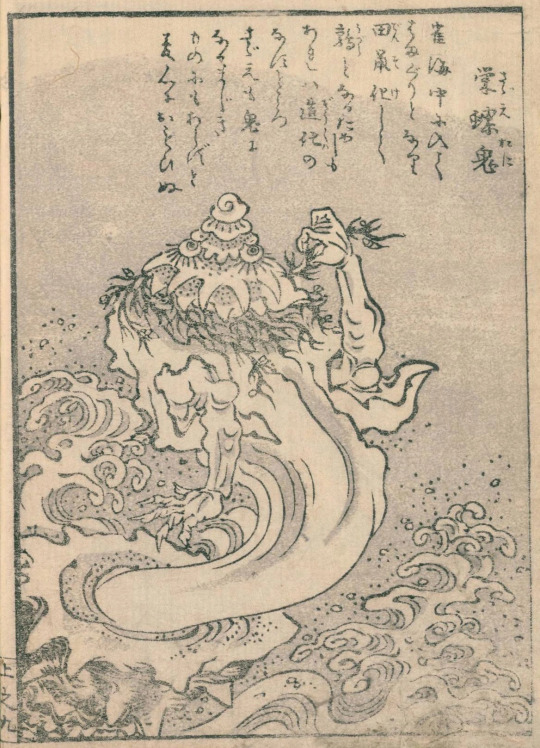
(image: a depiction of the sazae-oni)
The Galarian forms aren’t much different, though they seems to have moved to a more terrestrial lifestyle. Their Shellders being poison-type may reference the highly toxic cone snails. Galarian Slowbros Shellder being on its arm and acting as a projectile weapon references side arms and arm cannons while Galarian Slowking is a more sinister take on the turban-wearing wise man, with its Shellder now looking like a pointy witch hat.
Seel is, rather obviously, a seal, probably a harp seal pup. In addition to its seal origin, it may have some inspiration from other arctic marine mammals: the “horn” of a narwhal, white color of a beluga, and tusks of a walrus. Dewgong is named after the dugong, a relative of the manatee, but that is where their similarities end. Dugongs are rotund sirenians while Dewgong is obviously a seal. It’s a more mature Seel, with all the same inspirations.
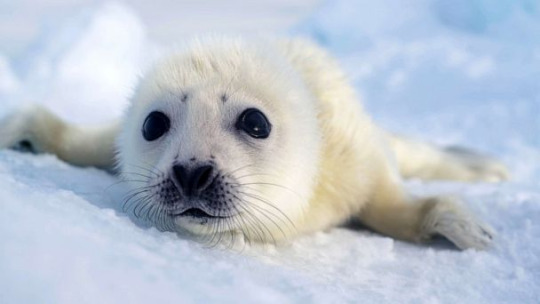
(image: a harp seal pup, easily the cutest thing I've ever put on this blog)
Shellder and Cloyster are both a hodgepodge of various bivalves. Shellder is a combination of clam and scallop. Clams spend most of their time buried under sand and have a powerful foot that can stick out of the shell and is used for moving and digging. Clams also have siphons, organs that are used to intake water, that can be extremely large in some species, most notably the geoduck.

I know what you're thinking and shame on you (Image: a geoduck clam)
Shellder’s constantly exposed tongue is likely a representation of the foot or siphon. They are also based on Scallops, which can swim short distances by rapidly opening and closing their shells to shoot out water.

And now you know why Spongebob made these into birds (gif: a scallop swimming)
Cloyster retains the Scallop swimming methods, but are more based on thorny oysters and true oysters. Thorny oysters are known for having prominent spines on their shells to deter predators.

I CAN FEEL THE WARP OVERTAKING ME! (image: a thorny oyster)
True oysters are the most famous pearl-producing bivalves. Cloyster’s head is based on a pearl, specifically a black pearl. These are produced by only a few species and are very valuable due to their rarity.

(image: black pearls on the shell of one of the species that make them)
That’s it for the first half of gen I. I will return soon (hopefully tomorrow) for the second part and they we will move on to gen II and beyond.
91 notes
·
View notes
Text
spinner sharks!
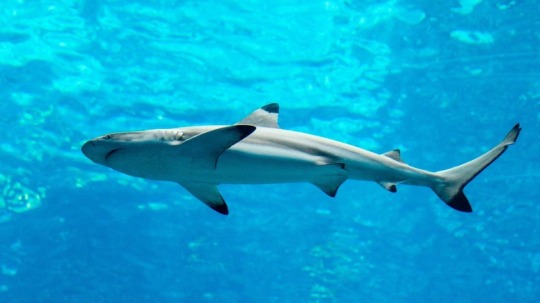
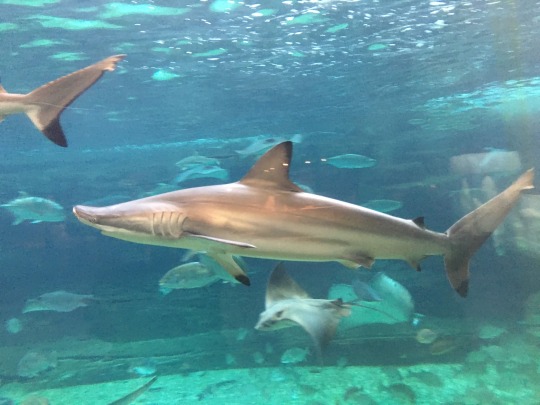

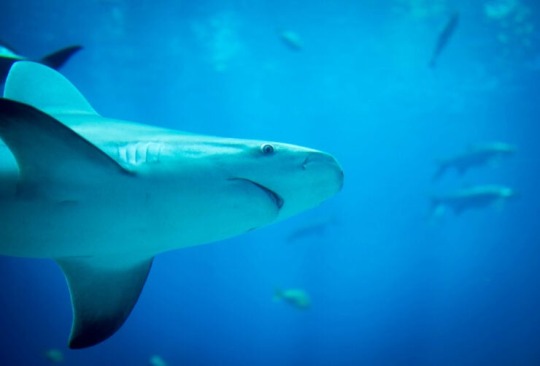
spinner sharks are sharks which live in many subtropical waters, such as the mediterranean and the gulf of mexico!
these sharks get their name from the way they spin out of the water to catch prey
they prefer shallower offshore waters no more than 350 feet deep!
spinner sharks grow from 6–10 feet in length
they grow roughly 2 inches a year until maturity, for 10-20 years!
spinner sharks can leap up to 20 feet in the air :]
2K notes
·
View notes
Text
The Sea Creature of the day is the Moon Jelly!!



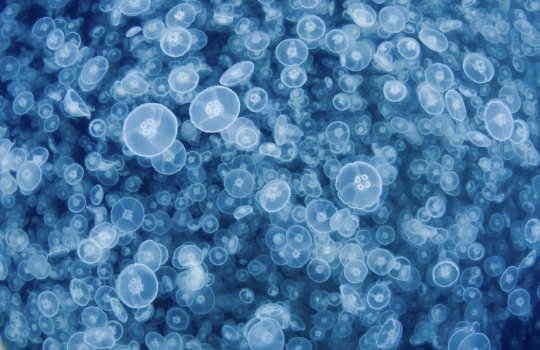
These absolutely beautiful creatures can essentially be found anywhere in the world and are one of the most commonly seen species of sea jelly.
A fun fact, though the immortal jellyfish is most commonly known for it, moon jellies too can revert back in their life cycle to the polyp stage if exposed to environmental stress. Through this, a single jelly can keep itself alive for a longggg time.
829 notes
·
View notes
Text

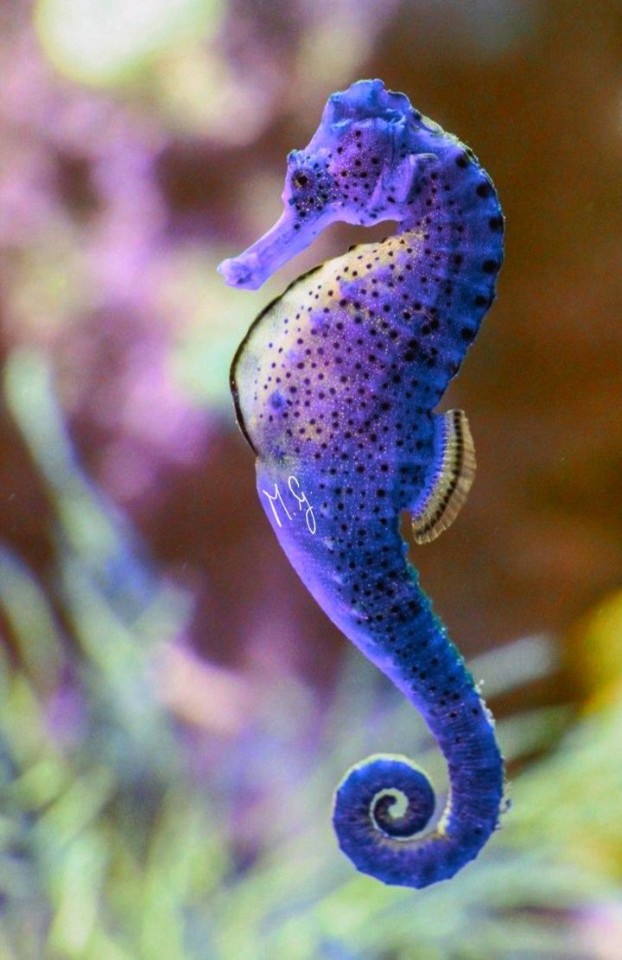




some of the cutest creatures ever created <3
2K notes
·
View notes
Text

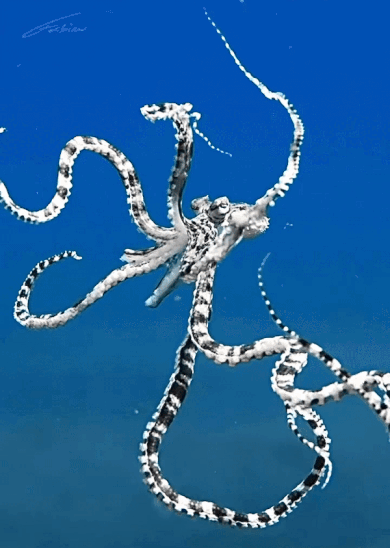
mimic octopus (thaumoctopus mimicus) | source
13K notes
·
View notes
Text
The Rarely Filmed Glass Octopus as a bottom feeder it lives in nooks in the rocks and is almost never seen floating free. About a foot long.
9K notes
·
View notes
Photo
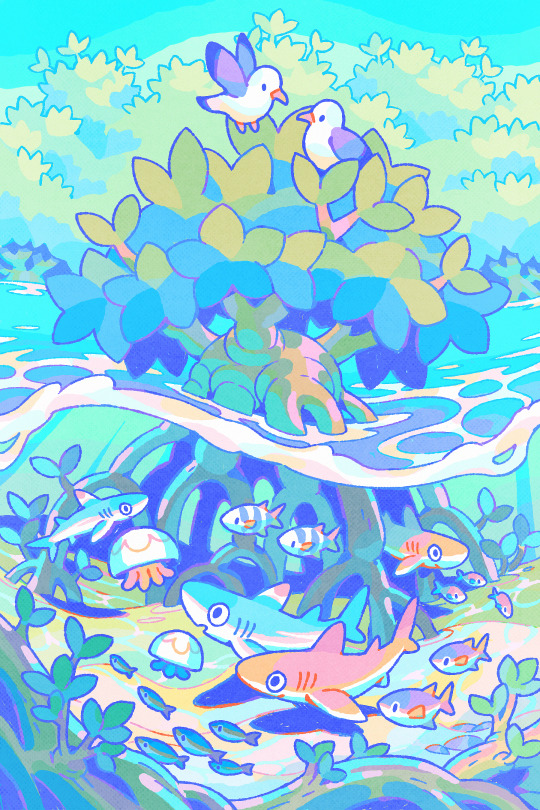



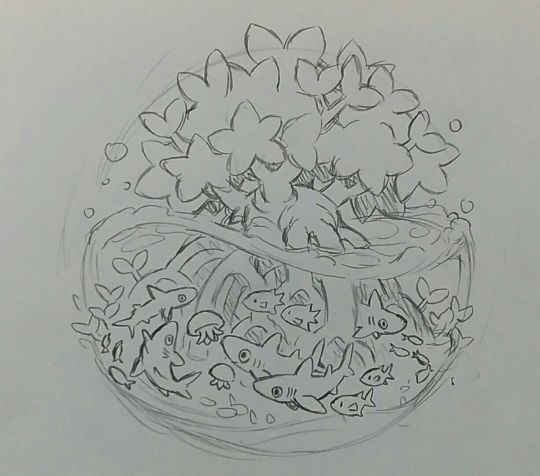
I participated for the first time in the Swim On zine created by @jeypawlik
To help collect donations for http://finfree.org
I made juvenile lemon and blacktip sharks, sheltered by a nursery hidden among the roots of a mangrove swamp! 🦈🌿
To learn more about Swim On and see its past issues, go to http://topazcomics.com/swimon/
I also just published the Speedpaint I recorded of this artwork on youtube, if you want to see it!
Hope you like it!✨
3K notes
·
View notes
Text
Sea Bunnies
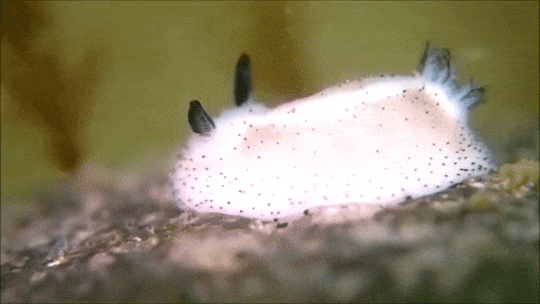


Sea bunnies, also knows as Jorunna parva is a species of dorid nudibranch, a shell-less marine gestropod mollusc in the family Discodoeididae. The species is about 1 cm long on average, and is usually black and white.
315 notes
·
View notes





